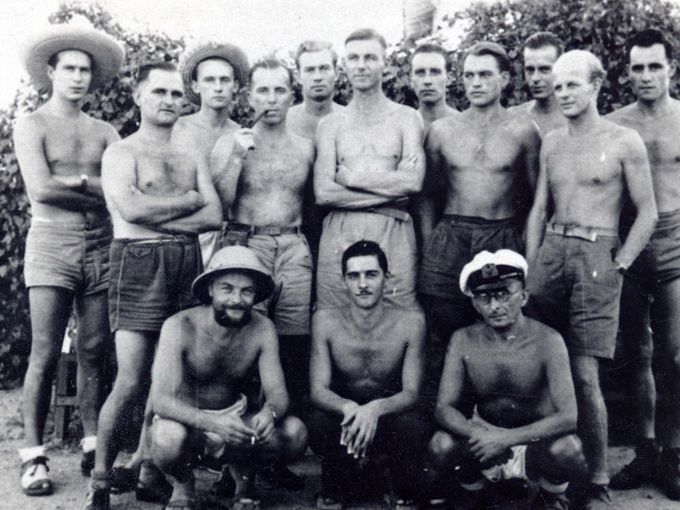1963’s The Great Escape told the story of British POWs escaping the Nazi camp Stalag Luft III. The film was based on a firsthand account of the real-life escape, where the British troops attempted to get 220 men out of three tunnels in a single night. Of the 149 escapees, 76 actually escaped Nazi Germany and 73 were recaptured.
Of those recaptured, 50 were shot on Hitler’s personal order. The remaining 23 captives were relocated. Four of those would be chained in their cells following another escape attempt. Those POWs made the Germans use an estimated 5 million men over the course of the following weeks searching for them, which is exactly how POWs are supposed to aid the war effort.
The Nazi Great Escape turned out a little different. During the second World War, the U.S. held some 400,000 enemy prisoners of war at 500 camps across the United States. Just as American POWs would burden their captors with escape attempts, the Germans were no different, attempting more than 2,200 escapes throughout the war.

Security unit #84 in Arizona’s Papago Park housed captured Nazi Kriegsmarine U-boat commanders and their crews. It was the POWs from #84’s compound 1A who would trigger the biggest manhunt in Arizona history. The U.S. military would call in local and state law enforcement, the FBI, and Papago Indian scouts.
John Hammond Moore’s book about the escape, The Faustball Tunnel, documents the entire episode. There were three main problems with the situation at #84. First, the Germans were housed in a way that put all the troublemakers together. Second, there was a blind spot in the guard tower’s view, one the Provost Marshall, Capt. Cecil Parshall knew the Germans would exploit. Finally, German officers and non-commissioned officers were exempt from work details under the Geneva Conventions, so all they had was time to plan their escape.
They began tunneling sometime in September 1944. Capt. Parshall was right, they used the blind spot in the guard towers. The Germans worked in 90 minute shifts of three-man crews digging near a bathhouse. They would go in, ostensibly to shower, sometimes excavate up to three feet per night, and a fourth crew would get rid of the dirt the next day. They eventually convinced the Americans to let them build a faustball (volleyball) court, which the Germans smoothed out with rakes provided by their captors.
Most were apt to make the 130-mile trek to Mexico. They were going to use toasted bread crumbs that would be mixed with milk or water for sustenance. They also needed things they could only get by co-opting the Americans. American photographers took snapshots of them to send home to Germany, and the Germans used those photos to make fake passports and other items. They would pose as foreign sailors making their way to the coast. They also earned U.S. money by making fake Nazi paraphernalia out of toothpaste tubes and bootblack.
Three other prisoners would instead plan to make their way 30 miles West to the Gila River, and so built a flatboat from scavenged lumber. The boat was designed to be folded up and carried in 18-inch segments. The guards just thought they were making handicrafts.
On December 23, compound 1B began to loudly celebrate news of the Battle of the Bulge as compound 1A quietly began their escape. Ten teams of 2-3 men left with packs of clothing, provisions, and false credentials, escaping by crawling through their tunnel. 25 men in all escaped into Papago Park that night.

The next evening, by the time Parshall knew there had been an escape, five of the escapees had turned themselves in because they were tired of being cold, hungry, and wet. A sixth would also be captured that day.
Soldiers, FBI agents, sheriff’s deputies, police, border patrol, and customs agents all joined the search for the nineteen remaining Germans. Ranchers and Indian scouts were drawn by the $25 reward posted for the capture of each escapee. Newspapers carried mug shots of the men.

By January 8th, 1945, only six men remained at large. The three boatmen were capture three days later, after discovering the Gila wasn’t much of a river and that their boat was largely useless.
The last three escapees didn’t try too hard to escape at first. They hid out in a shallow cave near Papago Park. They even went bowling in Phoenix and had a few beers one night. One of those would exchange places with other prisoners on work details outside of camp, then sneak back out on another detail, allowing another POW some time outside the camp. Eventually he was discovered and the last two men would be captured outside of Phoenix.
“Conceiving of it, digging it, getting out, getting back, telling about our adventures, finding out what happened to the others…why, it covered a year or more and was our great recreation,” one of the escapees recalled years later. “It kept our spirits up even as Germany was being crushed and we worried about our parents and our families.”
None of the 25 escapees were shot or killed by their American captors as retribution for their escape. No German POW ever escaped the United States and made his way back to Germany.


